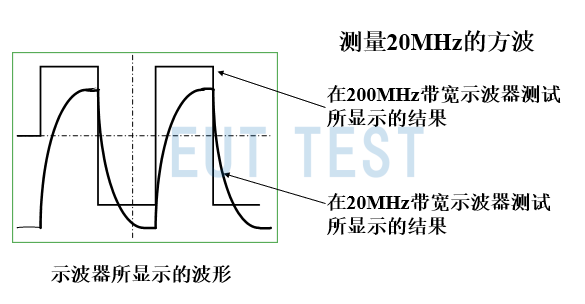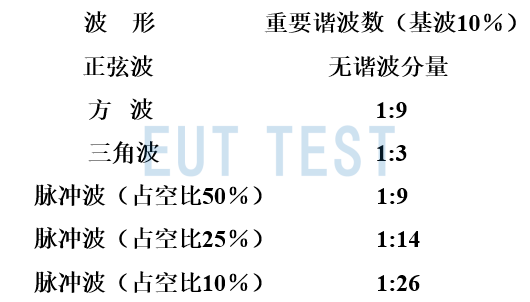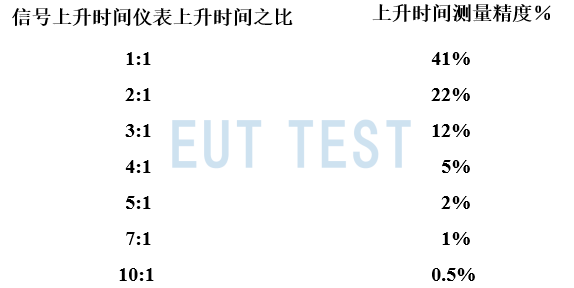Oscilloscope selection should focus on bandwidth, accuracy, and rise time parameters, which are critical for accurately displaying the actual waveform of the signal under test.
Oscilloscope Selection:
Oscilloscopes should be selected by considering the measurable parameters of the oscilloscope described above, and more importantly, the actual characteristics of the signal under test.
How to select the bandwidth parameter of an oscilloscope:
The structure of the oscilloscope determines the importance of bandwidth:
The analog bandwidth of the amplifier determines the bandwidth of the oscilloscope; the amplifier is the gateway for signals to enter the oscilloscope, its bandwidth determines the bandwidth of the oscilloscope, and what kind of signals the oscilloscope can accept is determined by this gateway.
The bandwidth of a digital oscilloscope is also an analog bandwidth.
Definition of bandwidth:
Instruments that measure AC waveforms usually have some sort of maximum frequency beyond which measurement accuracy decreases; this frequency is the bandwidth of the instrument, which is determined by the amplitude-frequency characteristics of the instrument.
Definition of bandwidth: In the amplitude-frequency characteristic, the sensitivity of the meter decreases by 3 dB, when the frequency is the bandwidth of the meter (3 dB bandwidth).

Oscilloscope 3dB bandwidth confirmation method
Effect of oscilloscope bandwidth on measured waveforms
After the oscilloscope bandwidth is determined, when we use it to measure the same signal we will get different measurement results. For example, in the figure below we want to measure a 20MHz square wave.

Different results of square wave measurements using oscilloscopes of different bandwidths
As can be seen from the above figure, insufficient bandwidth of the oscilloscope results in distortion of the measured signal.
How bandwidth affects waveforms in the time domain
The signal enters the oscilloscope by first passing through the amplifier, which is a low-pass filter.
The amplifier has a wide bandwidth (compared to the fundamental) and the output square wave does not exhibit distortion.
The bandwidth of the amplifier narrows, some harmonics in the waveform cannot pass through, and the output square wave is distorted, producing an error.
The amplifier bandwidth is very narrow and the output is almost entirely unlike a square wave, with a circular waveform due to the lack of major harmonic components.

Oscilloscope's low-pass filter affects waveform display
Oscilloscope Accuracy Selection
The accuracy of an oscilloscope is highly dependent on the harmonics of the waveform being measured

Relationship between the accuracy of an oscilloscope and the harmonics of the waveform being measured
Oscilloscope rise time parameter selection:
What is up time?
The time it takes for a waveform to change from one voltage to another is called the rise time. Ideally, square and pulse waveform voltages are waveforms that have abrupt changes, with the steep change taking place over a certain period of time, which depends on the system bandwidth and other circuit parameters. The rise time of a waveform is usually measured between 10% and 90% of the time.

Rise Time Measurement of Waveforms
Effect of oscilloscope bandwidth on rise time
The bandwidth of the oscilloscope will affect the rise time of pulses and square waves, and the relationship between rise time and bandwidth is determined by the following equation:
T rise = 0.35/BW
BW = bandwidth (frequency at -3 dB) (in Hz)
The faster the waveform transitions from minimum to maximum, the more harmonics it contains and the higher the amount of frequency the waveform contains.
The rise time of the oscilloscope should be less than the rise time of the measured signal waveform.
Measured rise time = (signal rise time)2+ Measuring instrument rise time2) -2
Relationship between waveform rise time and oscilloscope accuracy

Relationship between waveform signal rise time and oscilloscope accuracy
Learn more:
- Introduction to Oscilloscopes-Part I
- Principles and Use of Oscilloscopes-Part II
- Oscilloscope Triggering and Signal Storage-Part 3
- Oscilloscope Selection Methods-Part IV

